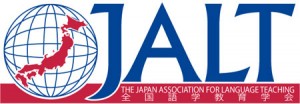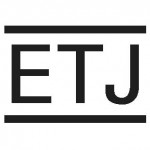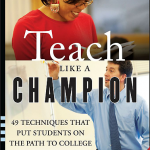conference curriculum EFL eikaiwa ES expectations kids language courses Language learning presentations Reading teaching teaching culture Uncategorized
by sendaiben
leave a comment
Power Seminar in Nagoya
I went to the latest Power Seminar in Nagoya last Sunday. It was a really long day (10-19:30) and studying for so long with short breaks really took its toll, but I really enjoyed the day and got a lot out of it. There were four presenters, each presenting for 90-120 minutes on their area of expertise.
Kim Horne, on Creating a Culture of Character in the Classroom;
Kaj Schwermer, on Teaching Children with Games and Activities;
Jeffrey Scott, on Dramaturgy and the Art of Classroom Management;
and Peter Warner, on The Four Stages of the English Alphabetic Code.
Overall, it was a great and well-organised event, and well worth the time and money.
Amazon.com curriculum EFL eikaiwa ES expectations JHS kids reviews teaching The Book Depository theory university
by sendaiben
5 comments
Teach Like a Champion in Japan
Teach Like a Champion is a recent book by Doug Lemov. Despite the cheesy title, I found it interesting, inspiring, and useful, and heartily recommend it to any teacher facing classes (the techniques are probably less useful for teaching one on one).
The book was written from a US K-12 (kindergarten to twelfth grade) perspective, so is a perfect fit for teachers working in elementary or junior high schools. Not all of the techniques are suitable for high school or university students, but a lot of them are, particularly in Japan, so even teachers working at those levels should consider it.
Teach Like a Champion is based on a philosophy of efficiency (what works best for the most students in the least amount of time). It’s a mindset that I admire and have been trying to apply to my classes here for quite some time now. One of my favourite parts of the book is where Lemov talks about the opportunity cost of activities:
“(reading) is a high-quality activity (when done efficiently) that can be carried out in any classroom, at any time, and with limited additional preparation or expense required. You can always invest any stretch of time, short or long, in meaningful reading and reap a strong and predictable retun. Furthermore, if you know you could always be doing meaningful reading -in any class, at any time -you can examine your other investments of time critically: do they exceed the value of meaningful reading? Are they potentially higher return but riskier and therefore should be balanced with something more reliable? As you ask these questions, you may well find that reading crowds out some of the other ways you invest your time.”
This mindset permeates the book, and makes it very persuasive. The idea of the opportunity cost of classroom activities is a simple one that I had never really thought about specifically. On reflection, my benchmark activity teaching English in Japan is extensive reading. Now, for me to do something else in class requires that it be more profitable than ER. Using this idea makes a huge difference to lesson planning.
I really like how Lemov brings a critical eye to classroom practice, making the overall tone of the book one of experimentation. The bulk of the book, however, is taken up by 49 very specific teaching techniques. Lemov claims that after observing hundreds of masterful teachers, he found that many of them were using the same strategies and activities, which he describes in Teach Like a Champion. There is also an online supplement with videos of the teachers in question using the techniques. In my opinion it is worth buying the book just to get access to this resource.
Teach Like a Champion is not perfect. It can feel a little cultish at times (all the techniques have names, which Lemov explains as being necessary in order to clearly convey what he is talking about, but names like “at bat” or “pepper” sometimes feel a bit silly), and the focus is very much on the US K-12 system. However, most of the techniques are universal, and I have successfully implemented them with both small group eikaiwa kids and university classes. All things considered, Teach Like a Champion is one of the best books on teaching I have read (I’ve actually read it twice, and am about to re-read it again to refresh everything), and a couple of friends who have also read it feel the same way.
Unfortunately it doesn’t seem to be available through Amazon.co.jp, so I ended up buying the Kindle version from Amazon.com and reading it on my iPhone, but it’s worth getting a copy sent from the US. For a free postage and packing option, check out The Book Depository.
* Disclaimer: the links in this review are affiliate links. If you click on the links and then buy the product, Amazon or The Book Depository will pay me about 3% of the cover price. This comes out of their profits, it does not make the product more expensive for you than buying it normally. Think of it as a tip to this blog. Of course, if you prefer, you can go straight to their websites and search for the book yourself. I won’t hold it against you 😉
conference curriculum EFL eikaiwa ES Jelly and Bean JHS kids language courses Language learning readers Reading teaching
by sendaiben
leave a comment
Phonics Readers for Children
My final presentation was on teaching children (and beginners) how to read. Starting with phonics and moving on to phonics readers. I also introduced my favourite reader series, Jelly and Bean (now renamed Follifoot Farm).
conference curriculum EFL eikaiwa ES expectations Jelly and Bean Language learning presentations readers Reading teaching theory
by sendaiben
1 comment
JALT 2010 in Nagoya
 I will be presenting three times this year at the JALT National Conference in Nagoya, details as follows:
I will be presenting three times this year at the JALT National Conference in Nagoya, details as follows:
All You Can Read: the Extensive Reading Colloquium
Saturday 20th: 17:15 in room 1203 (sponsored by the Extensive Reading SIG)
Raising Expectations: Measuring Results
Sunday 21st: 13:00 in room 1102 (sponsored by OUP)
Phonics-based Reading Practice for Children
Sunday 21st: 17:05 in room 1103 (sponsored by englishbooks.jp)
Hope to see a lot of friends there!
conference EFL eikaiwa ES ETJ kids Language learning Oxford Reading Tree presentations readers Reading teaching
by sendaiben
3 comments
Oxford Reading Tree presentation
 I presented at the Tokyo ETJ Expo yesterday, which was great. Lots of very good presenters, lots of keen teachers, lots of good content.
I presented at the Tokyo ETJ Expo yesterday, which was great. Lots of very good presenters, lots of keen teachers, lots of good content.
My powerpoint slides are available here in pdf format:
101107 ORT English through Stories


